Hello, this is Conservario.
Many people believe that the fastest way to improve is to practice relentlessly. While this isn't wrong, the act of "listening" is just as important.
Even if you don’t own a ukulele or can't practice at home, don’t worry—just listening can actually be a form of practice. Let’s dive into how this works with some practical examples.
Playing the ukulele—creating music—isn’t just about following sheet music perfectly. This applies to all instruments, not just the ukulele.
For example, if a tablature tells you to play the 3rd fret on the 1st string, you press it and strum—then move to the 2nd fret on the 4th string… This is correct and considered proper practice.
If you can play even more complex left- and right-hand techniques, people will say you’re skilled.
This is considered the most standard way to practice the ukulele.
In my previous columns, I’ve introduced how to read tablature and how to use the left and right hands to play. However, this is just the very surface of making music.
Simply following the numbers on a tablature and playing them doesn’t mean you fully understand and express the music. It’s important to recognize this difference.
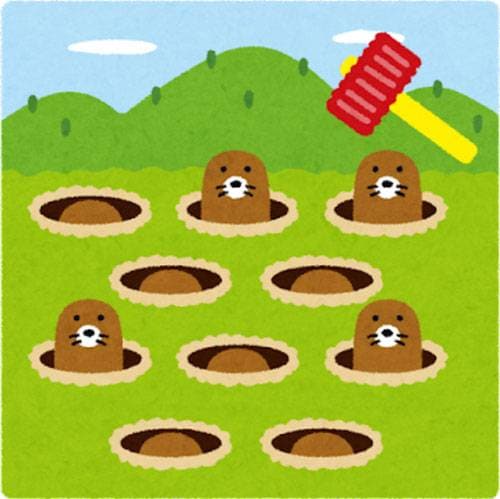
I often use the game Whack-a-Mole as a metaphor for music.
You’re probably familiar with it (though it’s sadly becoming rare these days). It’s the game where moles randomly pop out of about nine holes, and you hit them with a hammer.
Whether you imagine an arcade machine or a smartphone version, the thought process while playing is something like:
"A mole popped out of that hole—whack! Now another one over there—whack!"
Playing Whack-a-Mole with friends is a lot of fun—"Let's aim for a higher score next time!"
Now, for those of you who play the ukulele by reading tablature, what’s the difference between Whack-a-Mole and playing from a tab?
"This string, this fret—okay, next string, next fret..." Aren’t you doing the same thing as Whack-a-Mole?
Of course, the obvious difference is that one involves holding a hammer, while the other involves a ukulele. But in terms of the thought process, are they really that different?
しBut in reality, what’s happening in your head is exactly the same.
To put it bluntly, you might feel like you’re playing music, but you’re not really making music yet.
That may sound harsh, but the truth is, most people can’t even reach the “Whack-a-Mole” level of playing—so if you can, you should be proud!
The key now is to turn that skill into real musical expression. And to do that, listening is incredibly important.
I’ve been using the word "聴く" instead of "聞く" for a reason.
"聞く" often implies background noise—like having music on while doing something else. But "聴く" means actively focusing on the music.
This means using good speakers at the right volume or listening intently with earphones or headphones to fully immerse yourself in the sound.
Changes in volume, the transitions between chords, the buildup and quiet moments—top-tier musicians execute all these elements effortlessly.
If you’re just casually listening, you might not notice these subtle changes at all.
But when you listen closely, you’ll realize how much attention they put into every tiny detail of their performance.
You won’t be able to play like them overnight, but start by asking yourself:
"What were they thinking while playing this?"
Make it a habit to analyze their approach.
After listening, look for things you can apply to your own playing. It doesn’t have to be complicated—start with just one chord or one note.
When you play a note, make sure it has meaning—don’t just hit it mechanically like in Whack-a-Mole.
Avoid mindless playing and focus on expressing the sound.
Once you get the hang of it, you'll be able to play the ukulele in a truly musical way.
■ Summary
I introduced how to listen to music effectively.
I kept the tone light for easy reading, but the truth is, how much you actively listen will determine how well you can truly improve on the ukulele.
Of course, practicing by playing is important too.
However, most people don’t realize that listening is just as important as playing.
That’s because it takes time and experience to connect what you hear to your own playing.
If someone who can’t play at all listens to a top-tier performance, they won’t know what makes it great or how it differs from their own playing.
That’s why many focus only on practicing chords—since it gives them a more immediate sense of progress.
For beginners, focusing on playing is fine.
However, it’s a problem when intermediate and advanced players neglect active listening. Without it, progress stalls—it’s that simple.
If you want to improve your playing, dedicate time to listening as well as practicing. Even if results aren’t immediate, stay patient and consistent—you will see growth.
Thank you for reading!
The “sound & person” column is made up of contributions from you.
For details about contributing, click here.











![[Enjoy the Ukulele Even More!] Are You Practicing A Lot, But Still Can’t Get the Chords to Sound Good?](/contents/uploads/thumbs/5/2022/3/20220328_5_17277_1.jpg)
![[Enjoy the Ukulele Even More!] Mastering Downstrokes and Upstrokes](/contents/uploads/thumbs/5/2022/3/20220328_5_17270_1.jpg)
![[Enjoy the Ukulele Even More!] What to Do When Your Favorite Song Seems Too Difficult](/contents/uploads/thumbs/5/2022/3/20220328_5_17261_1.jpg)
![[Enjoy the Ukulele Even More!] Thinking About Playing a Sound](/contents/uploads/thumbs/5/2022/3/20220317_5_17099_1.jpg)
![[Enjoy the Ukulele Even More!] Hacks to Keep Your Strings Going Longer](/contents/uploads/thumbs/5/2022/3/20220317_5_17094_1.jpg)
![[Enjoy the Ukulele Even More!] For Those Who Feel Their Strumming Has Become Repetitive](/contents/uploads/thumbs/5/2022/2/20220228_5_16890_1.jpg)
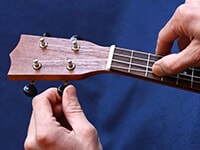 ウクレレのチューニング方法
ウクレレのチューニング方法
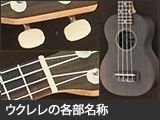 ウクレレの各部名称
ウクレレの各部名称
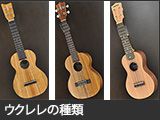 ウクレレの種類
ウクレレの種類
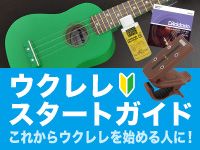 ウクレレスタートガイド
ウクレレスタートガイド
 めちゃラク!ギター講座
めちゃラク!ギター講座
 ウクレレ初心者講座
ウクレレ初心者講座















